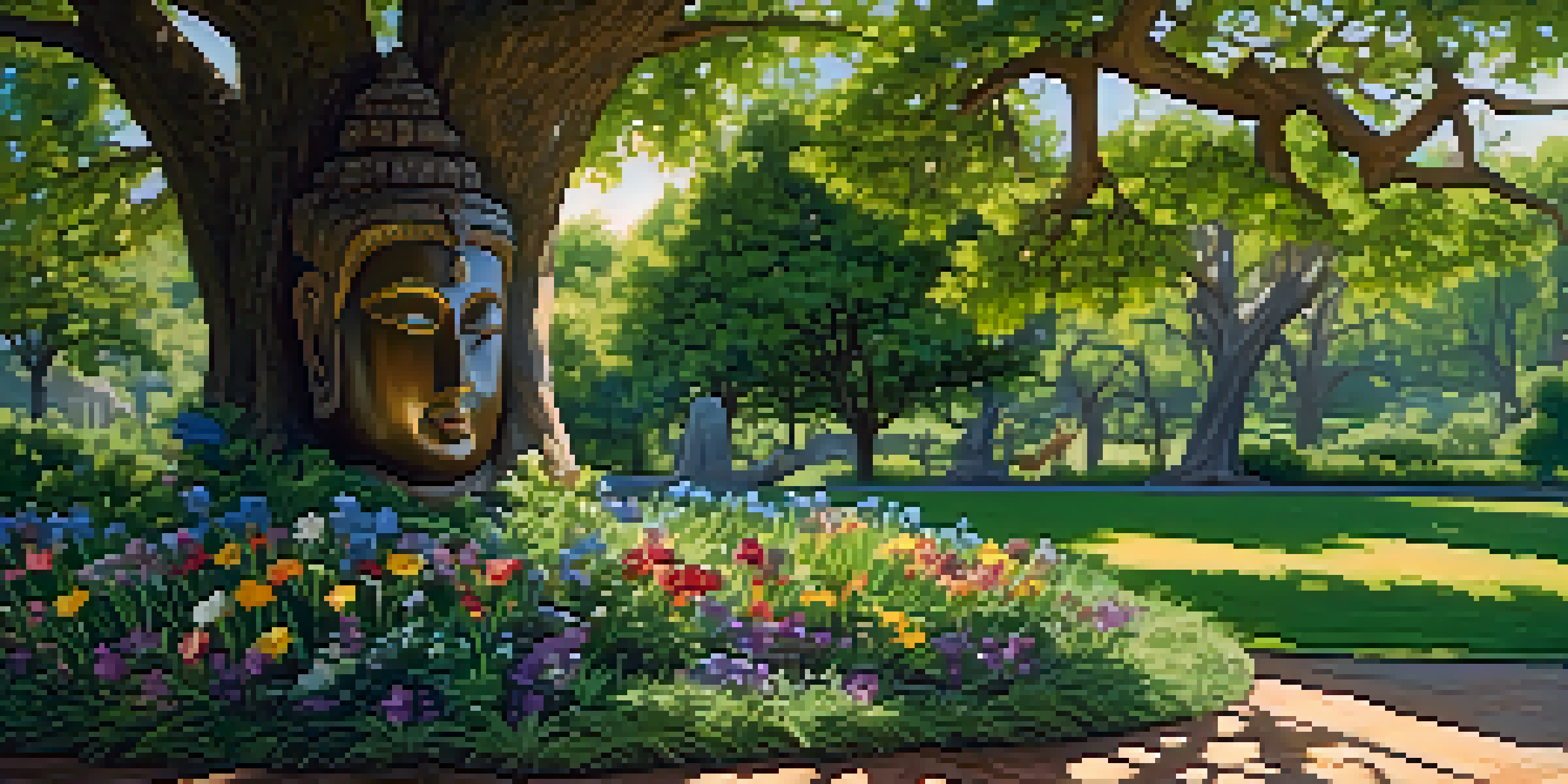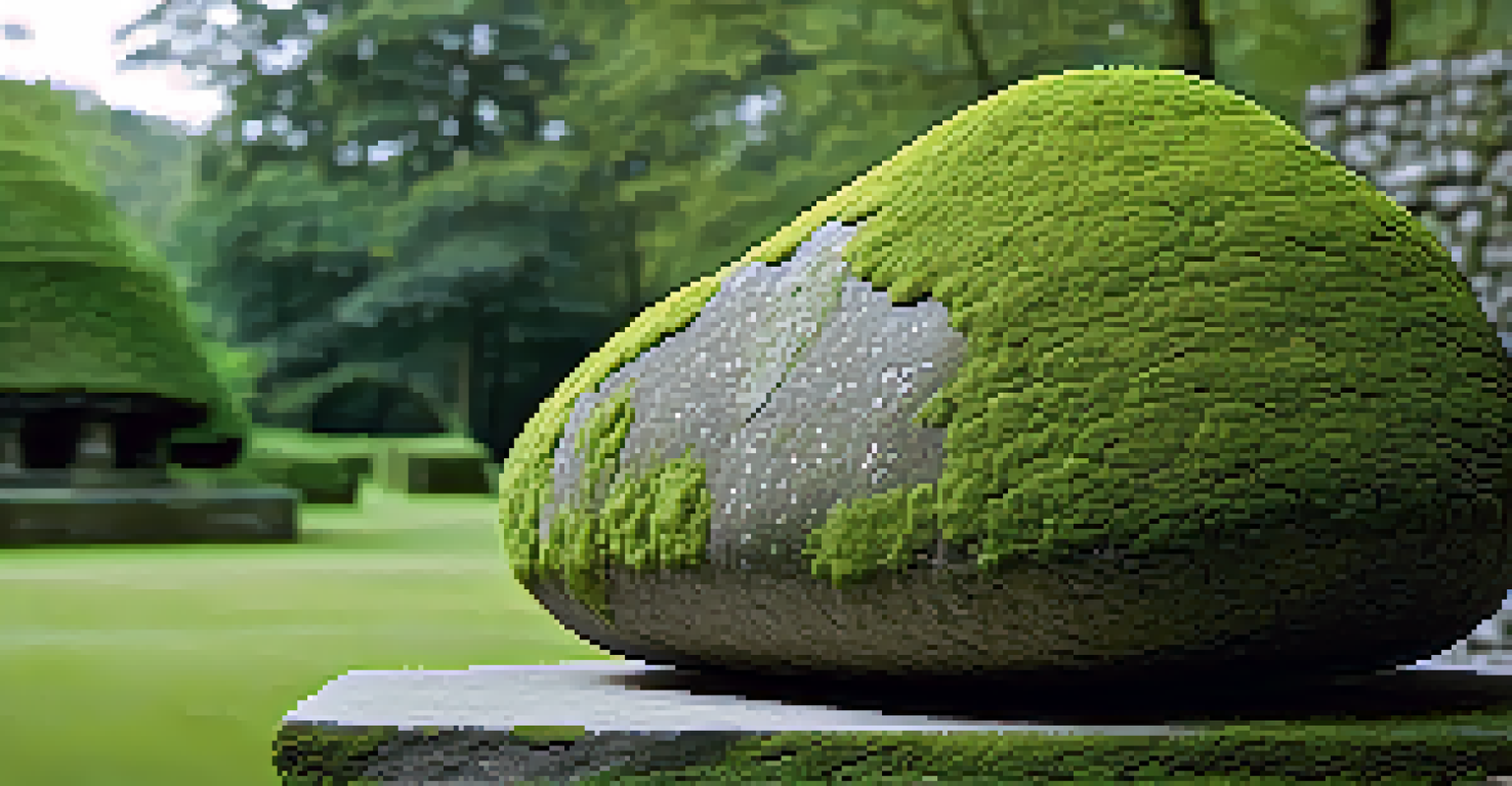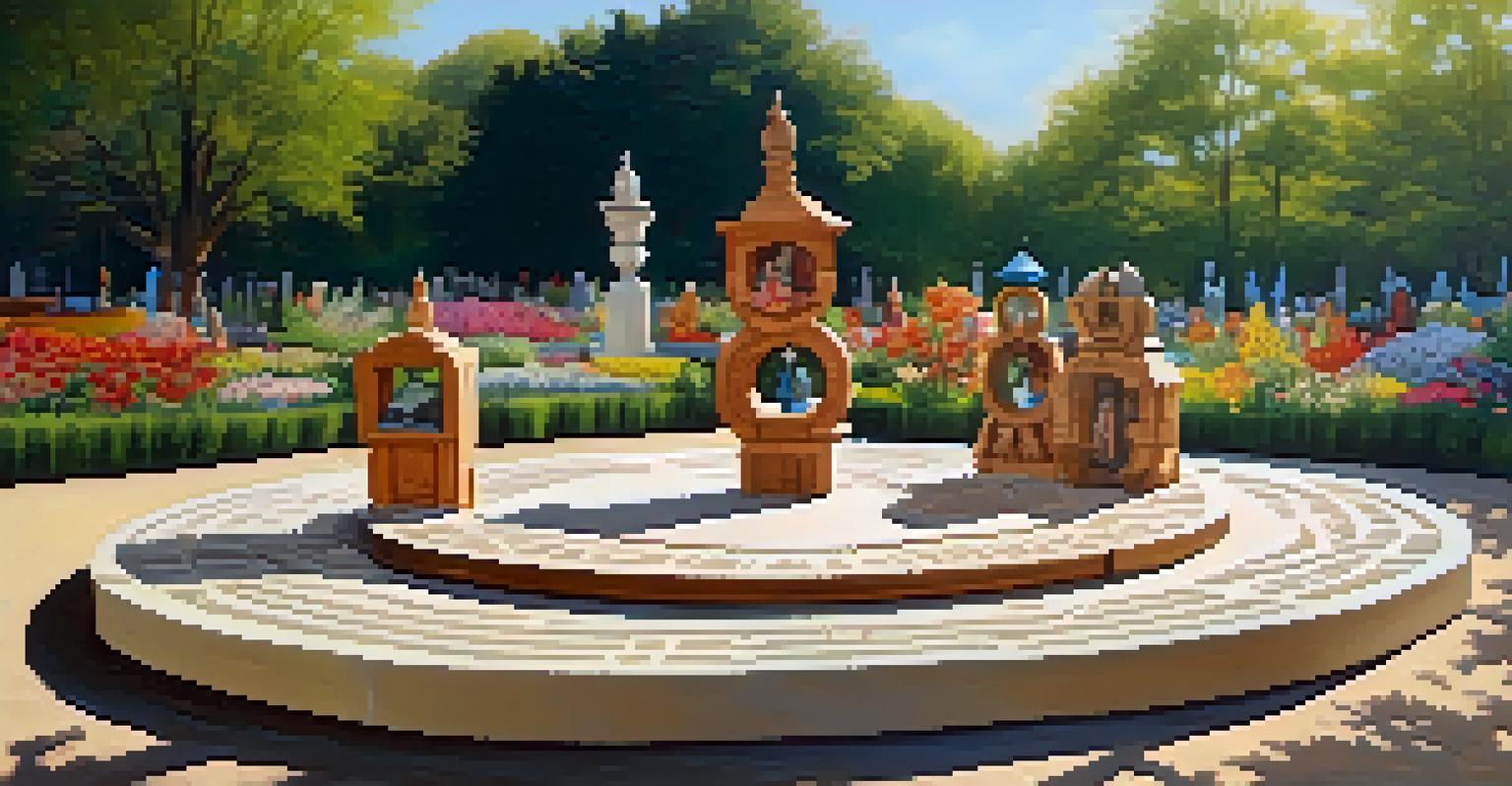Preventive Conservation Strategies for Outdoor Carved Artworks

Understanding Outdoor Carved Artworks and Their Vulnerability
Outdoor carved artworks, often made from materials like wood or stone, face various environmental threats. Exposure to weather elements like rain, sun, and snow can lead to deterioration over time. These artworks are not just visually stunning; they hold cultural and historical significance, making their preservation critical.
Art is the most beautiful of all lies.
Understanding the vulnerabilities of these pieces is the first step in effective conservation. For instance, wood can warp or rot, while stone can erode or stain. By recognizing these specific risks, caretakers can implement targeted strategies to protect these valuable artworks.
Ultimately, the goal of preventive conservation is to extend the lifespan of these pieces while maintaining their aesthetic and cultural value. This involves proactive measures rather than reactive fixes, which can often be more costly and less effective.
Regular Inspections: The First Line of Defense
Regular inspections are crucial for identifying early signs of damage. By routinely checking for cracks, fading, or other forms of wear, conservators can take prompt action before issues escalate. This process is similar to routine health check-ups; the earlier you catch a problem, the easier it is to address.

During these inspections, attention should be paid to the surroundings as well. Factors like soil erosion, nearby vegetation, and even pollution can impact the condition of the artwork. Understanding the entire environment helps in creating a comprehensive conservation plan.
Regular Inspections Prevent Damage
Routine checks help identify early signs of wear, allowing prompt action to protect outdoor carved artworks.
Documentation of each inspection is also vital. Keeping records allows conservators to track changes over time, making it easier to spot trends and adjust strategies as necessary. This methodical approach ensures that no detail is overlooked.
Protective Coatings: Adding a Layer of Defense
Applying protective coatings can significantly enhance the longevity of outdoor carved artworks. These coatings act as barriers against moisture, UV rays, and pollutants. Think of them as sunscreen for your sculptures, shielding them from harmful elements.
Preservation of one’s own culture does not require contempt or disrespect for other cultures.
However, choosing the right type of coating is essential. Some products may alter the appearance of the artwork or be incompatible with the material. It's crucial to consult with a conservation professional to select a suitable option that maintains the artwork's integrity.
Regular reapplication of these coatings is also necessary. Over time, the effectiveness of protective layers can diminish, and without timely maintenance, the artworks are once again susceptible to damage. Scheduling periodic updates can keep the artwork looking fresh and well-preserved.
Proper Placement: Choosing the Right Location
The location of outdoor carved artworks plays a significant role in their preservation. Ideally, they should be placed away from direct sunlight, heavy foot traffic, and harsh weather conditions. This strategic placement can drastically reduce wear and tear.
Consideration of natural elements is also important. For instance, positioning a sculpture under a tree can provide shade but may introduce risks like falling branches or sap. Assessing the environment carefully ensures a balanced approach to placement.
Protective Coatings Enhance Longevity
Applying suitable protective coatings acts as a barrier against harmful environmental elements, extending the life of the artworks.
Ultimately, the right location can enhance not only the artwork's lifespan but also its visibility and engagement with the public. A well-thought-out placement strategy invites appreciation while protecting the piece from potential harm.
Environmental Control: Managing Surrounding Conditions
Controlling the environmental conditions around outdoor carved artworks is essential for their preservation. Factors like humidity, temperature fluctuations, and air quality can significantly impact the condition of the pieces. By maintaining a stable environment, conservators can extend the artworks' lifespan.
For example, installing proper drainage systems can prevent water accumulation, which is particularly damaging for wooden sculptures. Similarly, reducing exposure to pollutants can prevent staining and degradation. Making these adjustments can create a healthier atmosphere for the artworks.
Regular monitoring of environmental conditions is also beneficial. Utilizing tools such as hygrometers and air quality monitors can help identify potential risks before they become serious problems. This proactive management keeps the artworks safe and in optimal condition.
Community Involvement: Engaging Local Support
Engaging the community in the conservation of outdoor carved artworks can significantly enhance their preservation efforts. Local residents often have a vested interest in these pieces and can act as stewards, helping to monitor conditions and report any issues. This collaboration creates a sense of ownership and responsibility.
Organizing community events or educational programs can raise awareness about the importance of preserving these artworks. By sharing knowledge and involving locals in conservation activities, you foster a culture of appreciation and care.
Community Engagement Supports Preservation
Involving local residents in conservation efforts fosters a sense of ownership and responsibility towards outdoor carved artworks.
Moreover, local partnerships can provide additional resources and support for conservation initiatives. Collaborating with schools, art organizations, and local businesses can lead to innovative solutions and funding opportunities to ensure the longevity of these cherished pieces.
Documentation and Record Keeping: Essential for Preservation
Thorough documentation is a cornerstone of effective conservation strategies. Keeping detailed records of each artwork's condition, maintenance activities, and any interventions made provides a historical context for future conservators. This knowledge is invaluable for ongoing preservation efforts.
Photographic documentation can be particularly useful. Taking before-and-after pictures during maintenance can visually demonstrate the impact of conservation efforts. This visual record can also serve as an educational tool for the community, showcasing the importance of preservation.

Additionally, sharing this information with other conservators can foster collaboration and knowledge exchange. By contributing to a shared database of conservation practices, we can collectively improve our approaches and ensure the best care for outdoor carved artworks.